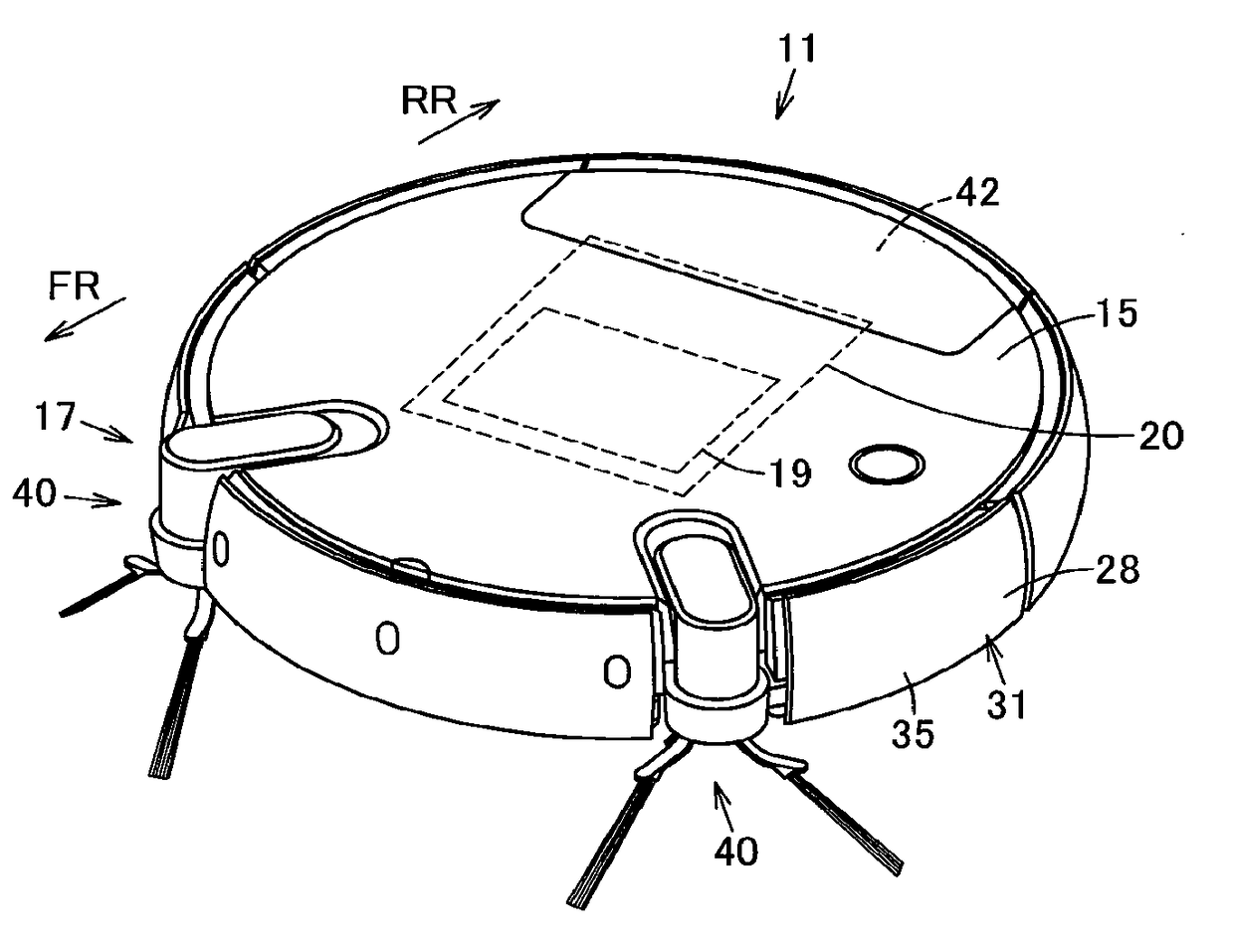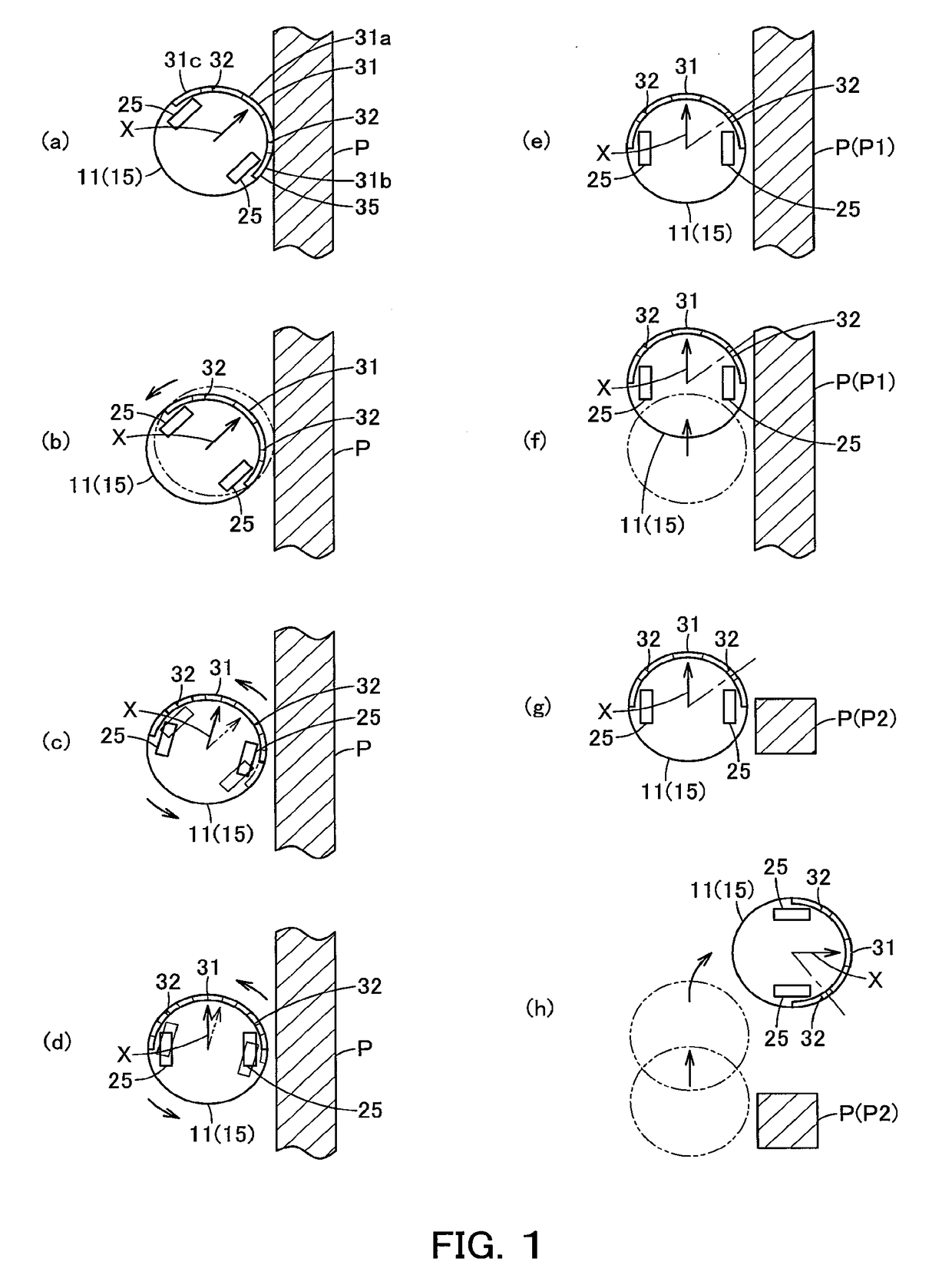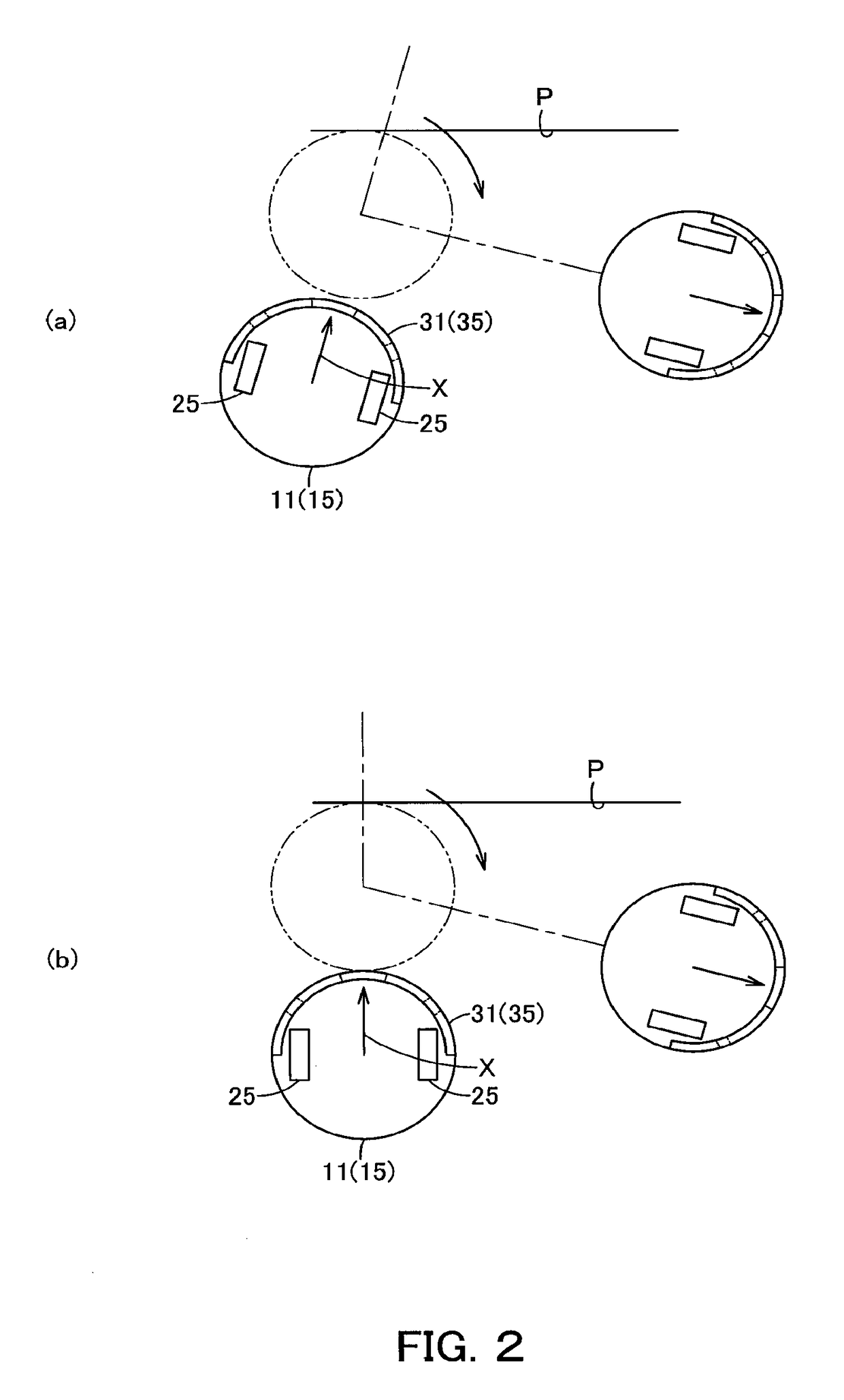Vacuum cleaner
a vacuum cleaner and vacuum cleaner technology, applied in the field of vacuum cleaners, can solve the problems of difficult to directly discriminate an obstacle by a sensor, worse efficiency, etc., and achieve the effect of effectively avoiding objects and efficiently cleaning narrow spots
- Summary
- Abstract
- Description
- Claims
- Application Information
AI Technical Summary
Benefits of technology
Problems solved by technology
Method used
Image
Examples
Embodiment Construction
[0024]Hereinbelow, an embodiment will be described in terms of its constitution with reference to the accompanying drawings.
[0025]In FIGS. 6 to 9, reference sign 11 denotes a vacuum cleaner as an autonomous traveler. This vacuum cleaner 11 is provided as a vacuum cleaner device serving as an autonomous traveling device together with, for example, a charging device (charging stand) as an unshown station device containing a charging circuit.
[0026]The vacuum cleaner 11 is, in this embodiment, a so-called self-propelled robot cleaner (cleaning robot) that, while autonomously traveling (self-propelling) on a floor surface being a cleaning-object surface as a travel surface, cleans the floor surface. The vacuum cleaner 11 includes a hollow main casing 15, a traveling part 16 for making the main casing 15 travel on the floor surface, a cleaning unit 17 for cleaning dust and dirt on the floor surface and the like, a communication part 18 for communicating with an external device including a...
PUM
 Login to View More
Login to View More Abstract
Description
Claims
Application Information
 Login to View More
Login to View More - R&D
- Intellectual Property
- Life Sciences
- Materials
- Tech Scout
- Unparalleled Data Quality
- Higher Quality Content
- 60% Fewer Hallucinations
Browse by: Latest US Patents, China's latest patents, Technical Efficacy Thesaurus, Application Domain, Technology Topic, Popular Technical Reports.
© 2025 PatSnap. All rights reserved.Legal|Privacy policy|Modern Slavery Act Transparency Statement|Sitemap|About US| Contact US: help@patsnap.com



